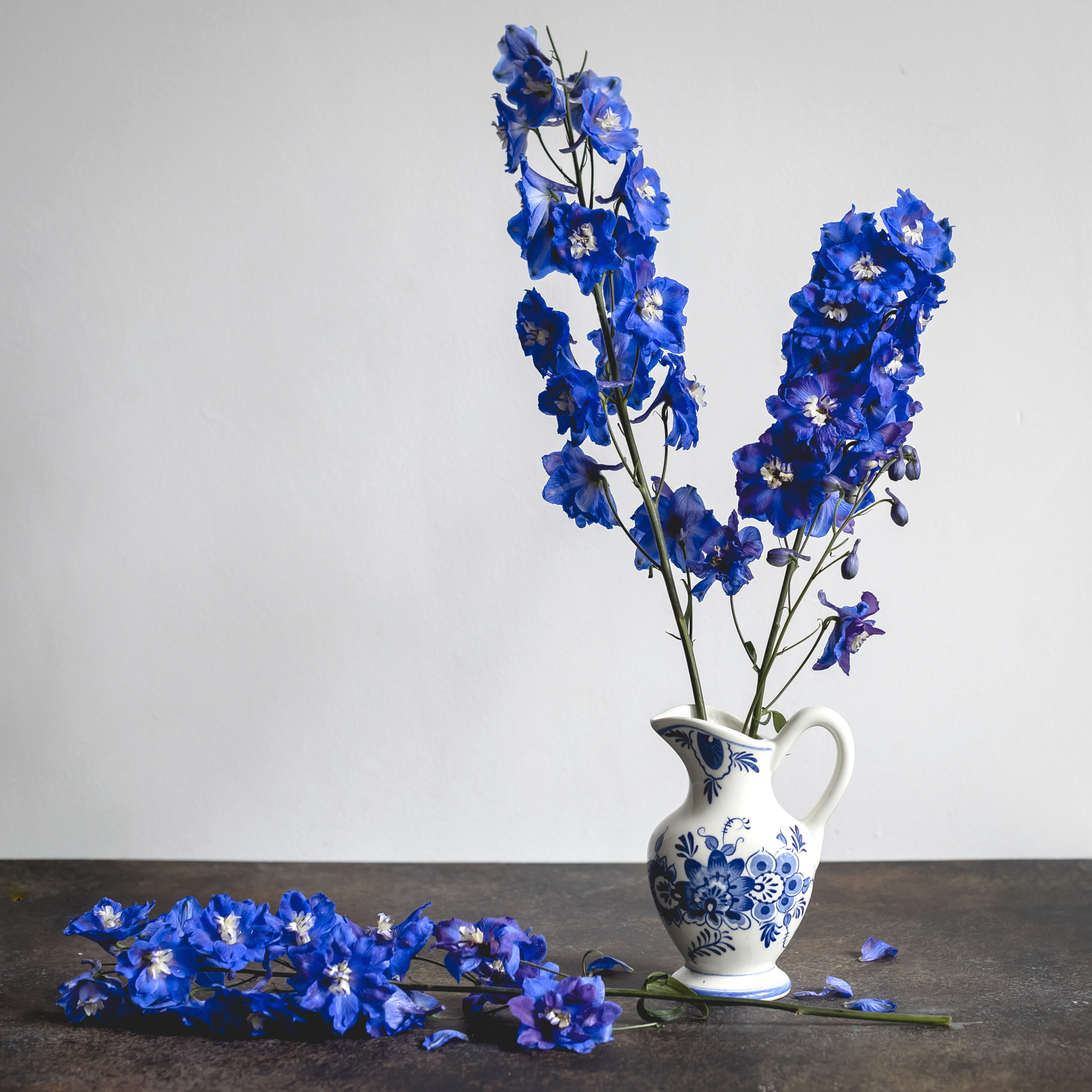
Ask Ella: Delphiniums Have A History As Rich As Their Color
Ask Ella is a recurring Garden Collage feature where we ask our in-house florist, Ella Stavonsky, about the history of, origin, and maintenance that goes into some of the most intriguing flowers on the market today. This column is dedicated exclusively to common and rare varieties of flowers you’re likely to find at your local market. This week, we spotlight delphinium, a tall flower loved by Greeks.
***
Though delphiniums are often known as larkspur, larkspur technically refers to the genus Consolida. Dephiniums instead derive their name from the Greek word for dolphin, due to the perceived resemblance between the two. One Greek legend tells of a terrible sea monster, which resembled a dolphin, terrorizing Greece.
The Grecians prayed to Apollo to save them and when he did, the god gave himself the name Delphineus and a temple was built in Athens to honor his heroism. The Greeks eventually chose delphinium as their national flower (in no small part because the plant grows readily in the Greek countryside).
For floral arranging, delphiniums are an easy flower to manage. Unlike ranunculus, there are small holes at the bottom of delphiniums, such that you do not need to pin them for them to take up water at a faster rate. They don’t require too much cleaning either, as delphiniums have little greenery (just remove the lower flowers and make sure to pick up any fallen blooms, as they are poisonous to humans and animals alike).
Cut the stems about half an inch every other day, but otherwise Ella recommends simply letting them soak in normal water. They will last about five days to a week from purchase, with the older blooms shedding at the bottom as the newer blooms open at the top. Mixed in with other tall flowers (like snapdragons or bird-of-paradise) or woven into flower crowns, delphiniums bring from the garden a delicate, elegant beauty with immeasurable springtime appeal.


































